Disclosure: This post may contain affiliate links. I earn a small commission of product sales to keep this website going.
There’s always been this nonsensical argument about what a “pro” camera is.
Recently someone mentioned to me that their backpack is larger and heavier because they have pro gear. I guess that meant that full-frame Canon DSLRs are automatically pro cameras while mirrorless APS-C cameras are automatically amateur cameras, with no consideration given to the person behind the camera.
I’ve always just thought, shoot the camera you want to shoot, and if you make money and get gigs with it and are a respectable person, you’re a pro no matter what you shoot.
But when I created my Fujifilm camera comparison, I dismissed the X-E3 as a serious camera for professionals. Here’s a bullet list of my reasons why at least I wouldn’t consider it a pro body.
- Small size, uncomfortable to use for continuously lengthy periods of time.
- No environmental sealing.
- Lacking all external controls found in other Fujifilm X cameras like the X-T2.
- Poor balance when mounted with larger lenses like the 56mm f/1.2 and 50-140mm f/2.8.
I’m getting ready to go to Morocco for some non-profit work. I’m going to be doing a lot of street shooting and in tight quarters, and I wanted a secondary body even more inconspicuous than my X-T2 and spare X-T1. I went back to my comparison table and took a closer look at the X-E3, released in September 2017.
Update: I just returned from Morocco and got some GREAT photos with the X-E3. You can read about the trip and see some photos here; I’ll have another post soon about the X-E3 with the 18-135mm lens.
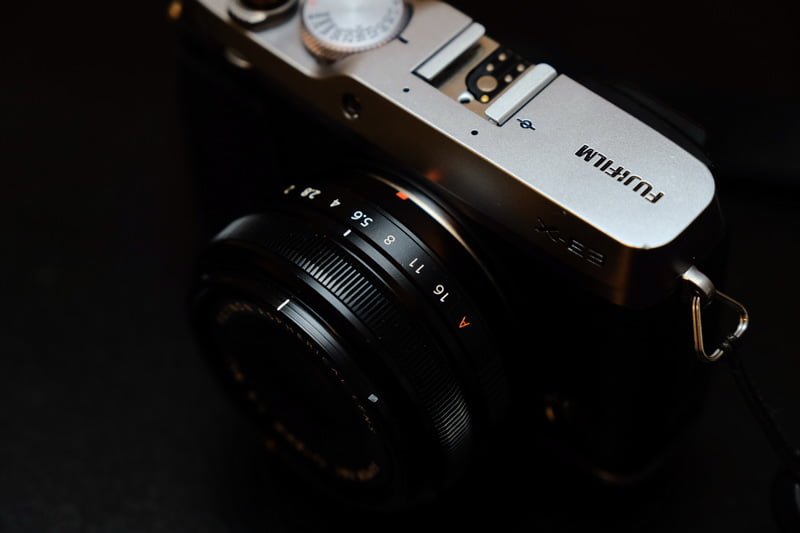
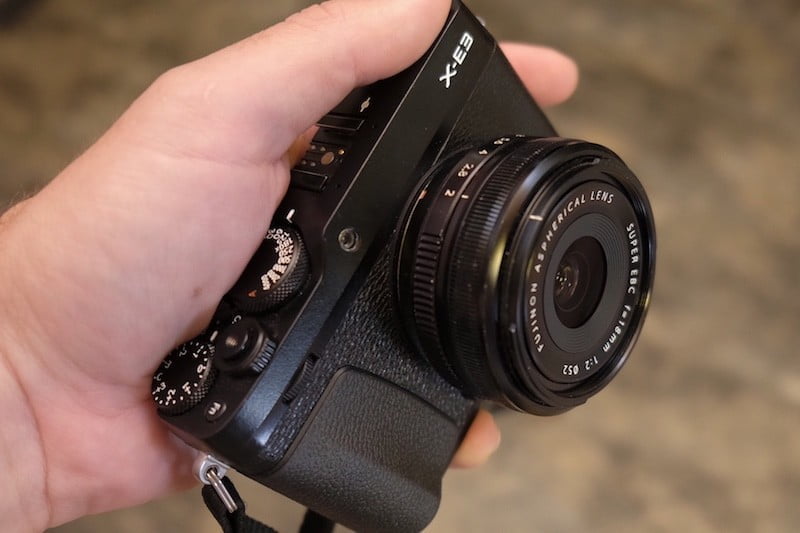
The Fujifilm X-E3 compared to the X-T2
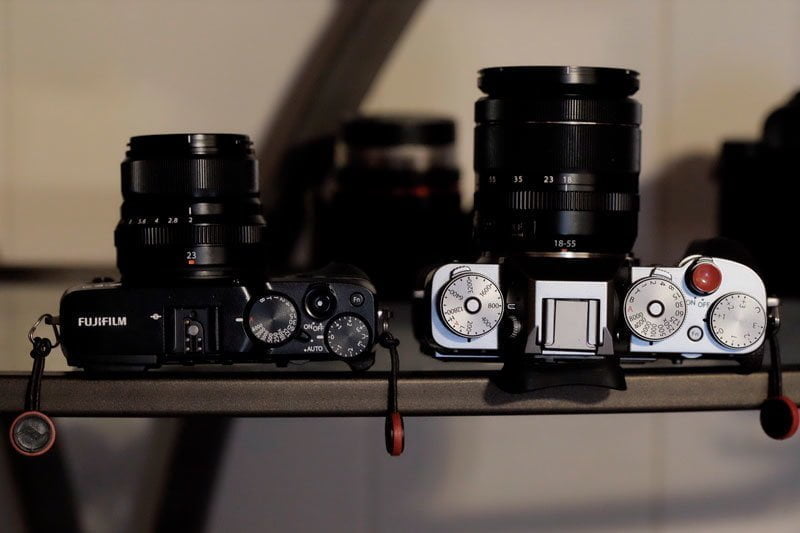
X-E3 & X-T2 Main Similarities
- 24MP X-Trans CMOS III Sensor
- X-Processor Pro Processor
- 4K 30fps video
- ISO 100-51200
- Shooting at 14fps
- 325 fast autofocus points
- 15 film simulation modes
- Interchangeable X mount lens
A note on this last point: the best thing about Fujifilm X cameras isn’t the cameras themselves, but the lenses. They’re all high quality (even the kit lenses), affordable, and include features like environmental sealing and image stabilization. When you’re budgeting for a camera, remember that the light has to pass through the lens before hitting that wonderful sensor. Don’t skimp.
X-E3 & X-T2 Main Differences
- X-E3 isn’t environmentally sealed
- No dedicated ISO dial on the X-E3
- Control knobs are smaller on X-E3
- No rear command dial pad on X-E3
- LCD: X-E3 has fixed touchscreen; X-T2 has an articulating screen without touch
- X-E3 has Bluetooth, X-T2 only has WiFi
- EVF on X-E3 is smaller and off-center like a rangefinder
- X-E3 has only one SD card slot
- Sync speed of 1/180 in the X-E3 vs 1/250 in the X-T2
So as you can see, the cameras are the same on the inside. There are a few external feature differences, compromises that make this a smaller & cheaper camera.
But will it work as a “pro” body? I rented one with an 18mm f/2 lens to see if it’d work for me.
I bought one after only a day with the rental
Short answer, yes, it’ll absolutely work.
It took me a while to get used to the small size and slightly different controls. I’ll address how I dealt with the differences listed above in order.
- Environmental sealing: This won’t be my primary body while sailing in Caribbean weather or riding out Sahara sandstorms. It’s just a small secondary camera to carry around for quick snaps or inconspicuous street shooting. Lack of environmental sealing isn’t a dealbreaker for a secondary body.
- No ISO dial: Because ISO is a setting I change a lot, I’ve programmed the front command dial to change it. Like the X-T2, you can program three AUTO ISO settings to specify different min/max ISOs and min shutter speeds.
- Smaller control knobs: I can deal.
- No rear command pad: I’ve programmed the touchscreen “gesture swipe” directions to match what I had programmed in my X-T2 pad. There wouldn’t be room for a command pad on this camera.
- Fixed LCD screen: I normally shoot with the EVF, but when I’m shooting with the LCD it’s usually because I need to tilt it. I rarely need this feature so this isn’t a dealbreaker. It’d be tough to keep the camera small and include a flip screen.
- Smaller EVF: Once I get my eye up to it, I can’t tell the difference. It’s still the same resolution, bright, and refreshes quickly.
- Only one SD card slot: Most cameras only had one up until recently and I’ve survived. And as I said, I won’t be using this as my “primary” gig camera. I can set the camera to automatically transfer the JPGs to my phone if I’m that worried.
- Slower sync speed: It’d be nice to get up to 1/250, but there are ways to make it work. And if I really need to overpower the sun with a big flash setup, it’s unlikely I’d be using this camera anyways.
I also programmed the top Fn button to switch between the mechanical shutter and electronic shutter. I’m just one button press away from taking photos without anyone else hearing me do it.
About that “AUTO” switch up top – this sends the X-E3 into the amazingly intelligent Advanced Scene Recognition AUTO+ mode. Files are only output in JPG, but it’s a great feature when you just need to quickly hand the camera off to someone else to snap a pic.
The X-E3 Touchscreen
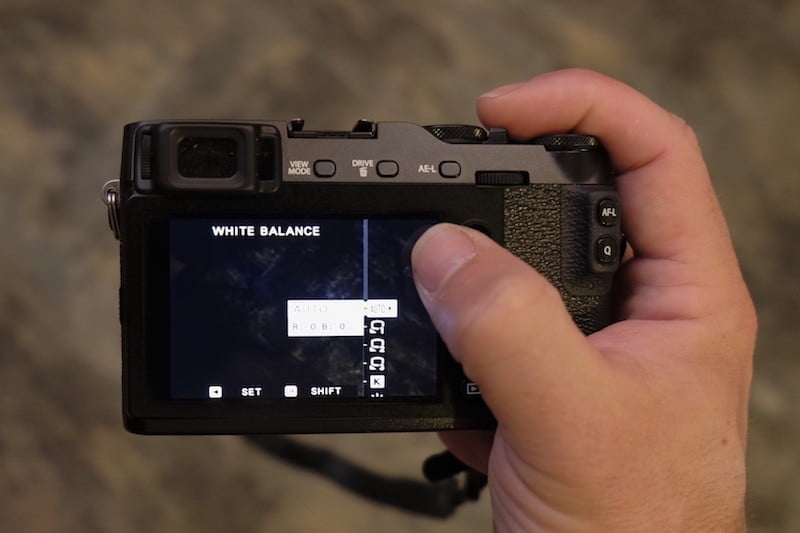
I always thought touchscreens were kinda gimmicky. Probably because they first appeared on consumer point-and-shoot cameras with “toy” digital filters (wait, Fuji has that too). The X-E3 was the first camera I used with a touchscreen, and after a little bit of fumbling around, I’ve now come to love it.
As I mentioned earlier, the command pad found on larger X cameras is replaced by “gesture swipes” across the four edges of this LCD. I’ve programmed the gestures to match my X-T2 pad. It takes a short, quick swipe to get it to work – make it too deliberate and it won’t register.
I also mentioned that I primarily use the EVF. Now, this is cool – while looking through the EVF, I can place my thumb on the LCD and move my focus point around, and I can watch it in real-time in the EVF. You can also quickly change your focus point with a quick tap while recording movies.
Summarizing my reconsideration of the X-E3
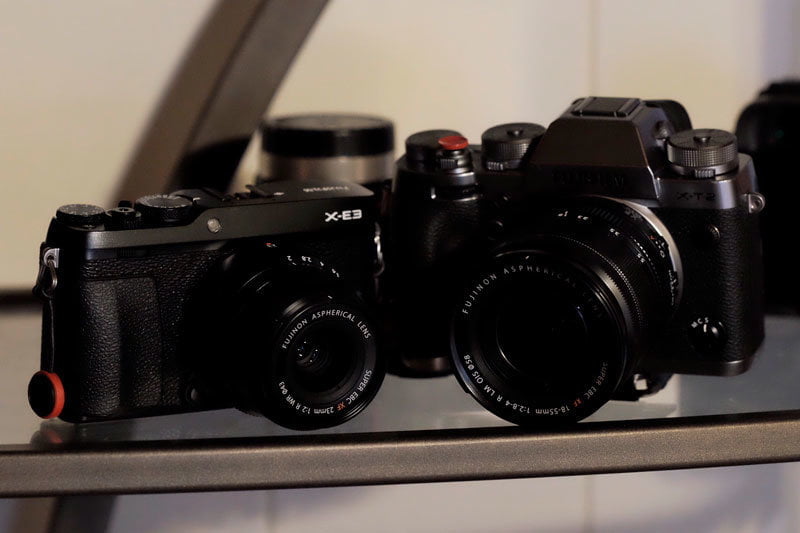
It’s just a small X-T2. Slightly different controls, but much smaller and lighter.
The optics, sensor, and processor are exactly the same, so I’ll get exactly the same quality photos. Why not have it as a secondary?
You probably wouldn’t want to carry it around with a large, fast zoom lens, but for smaller primes it’s perfect.
I was super impressed with the speed & accuracy of the autofocus – much better than my X-T1. I took the rental camera out at dusk, and with continuous autofocus set and in burst drive mode, the camera precisely tracked the dog running towards me with no issues in low light. The X-E3 also preserves the same great manual focus aides found on the X-T2.
The X-E3 is available in black or silver, body only for $699 (Check current prices at Amazon | B&H Photo Video). Kits are available with the 18-55mm lens (a great kit lens) for $999 or the 23mm f/2 prime for $949.
Want to rent one before committing to a purchase? Get a good deal at BorrowLenses.com.
I opted for the kit with the 23mm f/2 prime lens and can’t wait to travel with it!
